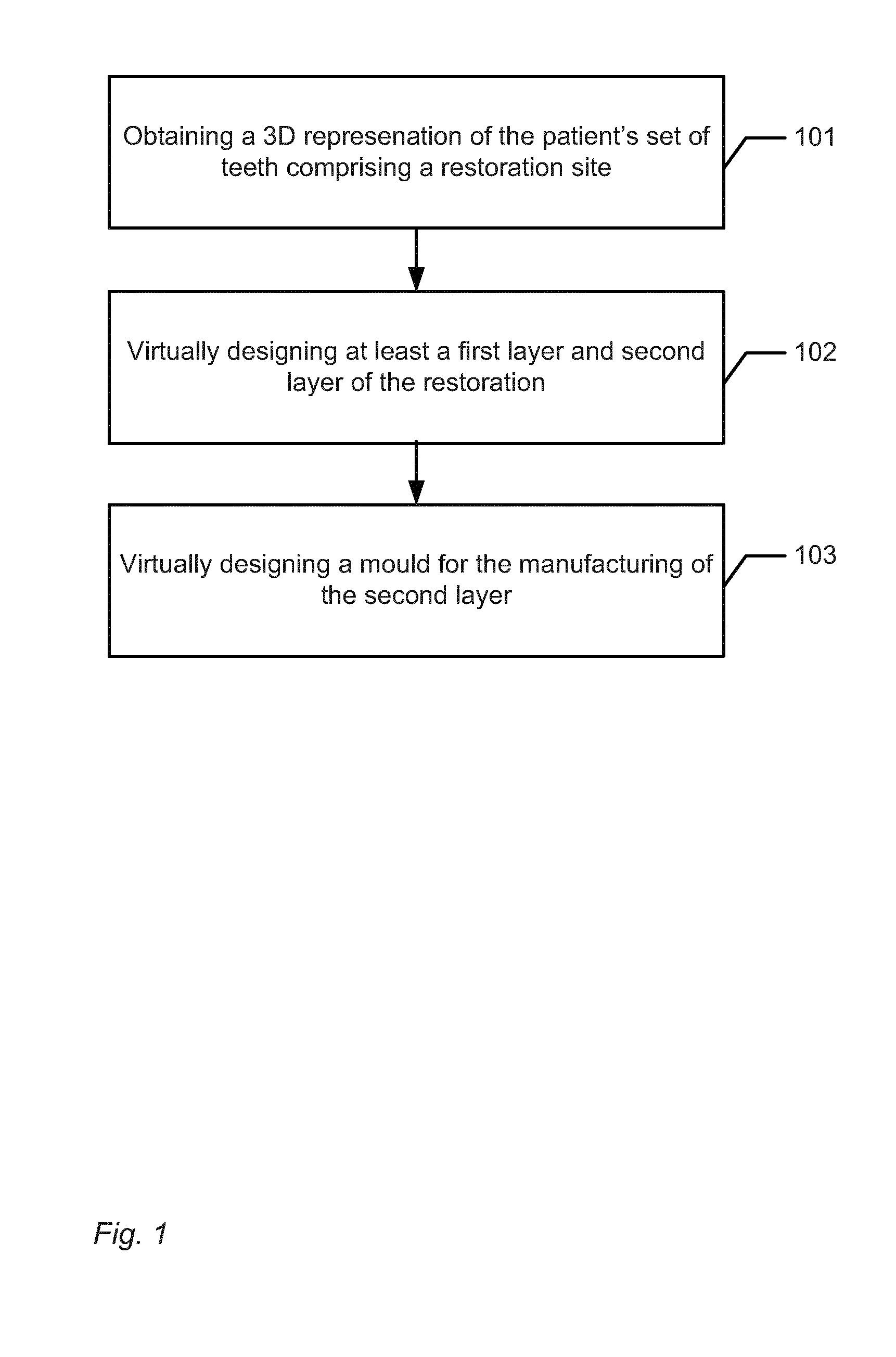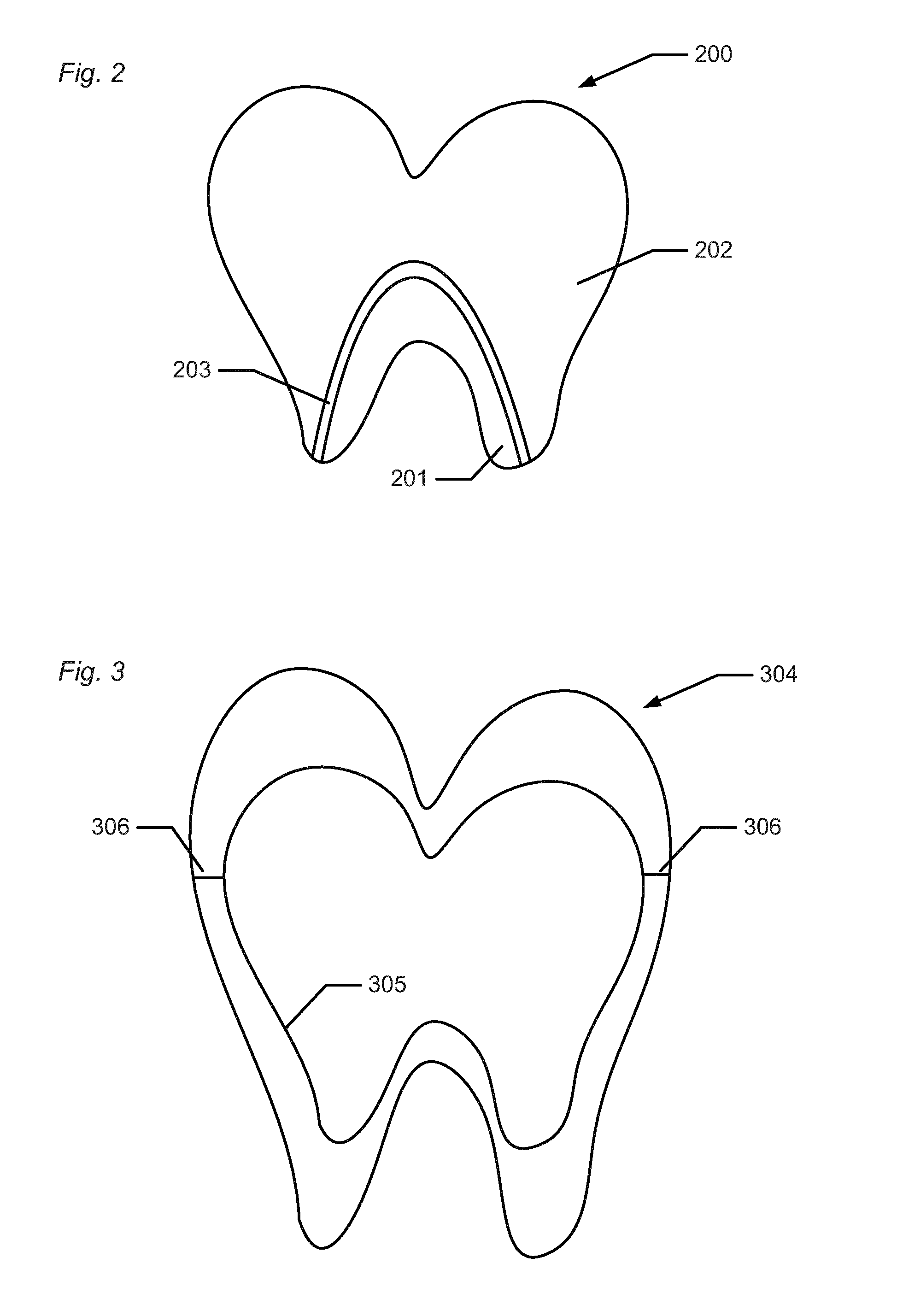Mould for dental restoration
a technology for dental restorations and moulds, applied in dental surgery, dental tools, impression caps, etc., can solve the problems of difficult to accurately determine the original surface, difficult to cut the sprue off correctly, and the original shape of the surface may not be maintained, so as to achieve the effect of reducing the length of the spru
- Summary
- Abstract
- Description
- Claims
- Application Information
AI Technical Summary
Benefits of technology
Problems solved by technology
Method used
Image
Examples
Embodiment Construction
[0329]In the following description, reference is made to the accompanying figures, which show by way of illustration how the invention may be practiced.
[0330]FIG. 1 shows an example of a flowchart of a method for designing a virtual mould used for manufacturing a corresponding physical mould adapted to be used in manufacturing of a dental restoration for a patient.
[0331]In step 101 a 3D representation of the patient's set of teeth is obtained, where the set of teeth comprises a restoration site where the manufactured dental restoration is adapted to be arranged.
[0332]In step 102 a first layer and a second layer of the dental restoration is virtually designed, where the first layer is adapted to match the restoration site and is part of a first portion of the dental restoration, and where the combination of the first portion and the second layer provides at least part of the dental restoration.
[0333]In step 103 the mould is virtually designed, where the mould is adapted for the manuf...
PUM
| Property | Measurement | Unit |
|---|---|---|
| temperature | aaaaa | aaaaa |
| temperature | aaaaa | aaaaa |
| shape | aaaaa | aaaaa |
Abstract
Description
Claims
Application Information
 Login to View More
Login to View More - R&D
- Intellectual Property
- Life Sciences
- Materials
- Tech Scout
- Unparalleled Data Quality
- Higher Quality Content
- 60% Fewer Hallucinations
Browse by: Latest US Patents, China's latest patents, Technical Efficacy Thesaurus, Application Domain, Technology Topic, Popular Technical Reports.
© 2025 PatSnap. All rights reserved.Legal|Privacy policy|Modern Slavery Act Transparency Statement|Sitemap|About US| Contact US: help@patsnap.com



